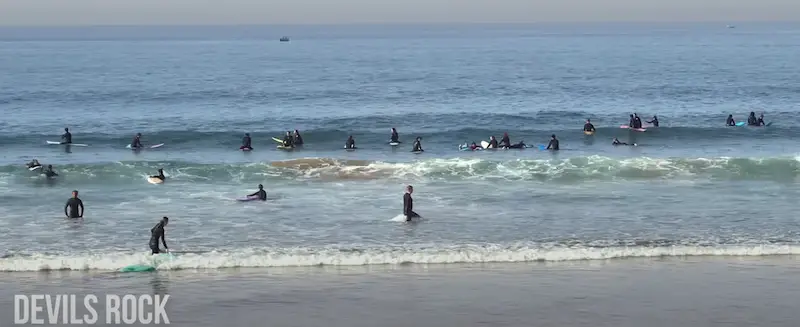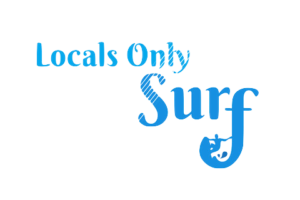Taghazout, Morocco, has long been a must-visit destination for surfers seeking sunshine, world-class waves, and a laid-back surf culture. Nestled between Agadir and Imsouane, this small town is home to some of the best right-hand point breaks in the world, drawing surfers from across the globe. But is it worth the trip? In this guide, we’ll break down everything you need to know before heading to Taghazout—including the best surf spots, local crowds, accommodations, costs, and travel tips.
Why Surf in Taghazout?
Taghazout’s appeal is easy to understand. It offers:
- Consistent Waves: The best season (December–March) brings powerful North Atlantic swells.
- Ideal Climate: Warm, sunny weather year-round.
- Variety of Surf Breaks: From mellow beach breaks to heavy reef slabs.
- Affordability: Cheaper than European or North American surf destinations.
- Culture & Scenery: A mix of Berber traditions, Moroccan flavors, and stunning coastal views.
That said, Taghazout’s popularity has a downside—heavy crowds. If you’re expecting an empty lineup, you’ll be disappointed. But if you’re prepared, you can still score great waves.
Best Surf Spots in Taghazout
- Anchor Point – The Crown Jewel
If you’ve seen photos of Moroccan surf, you’ve likely seen Anchor Point. It’s a long, fast right-hander with multiple sections for carving, barreling, and high-performance surfing. On a good swell, it can peel for hundreds of meters.
Downside? Crowds. You’ll never surf Anchor Point alone, and localism is strong. Expect 50+ surfers in the lineup, many of whom will be experienced locals taking priority. - Killers – A Fun But Tricky Paddle
Killers is a powerful, high-performance right-hander. It requires a long paddle-out, which slightly reduces the crowd factor—but don’t expect an empty lineup. - Bananas & Devil’s Rock – Intermediate-Friendly Waves
Bananas is a mellow right-hand point break, ideal for mid-lengths and longboards. Devil’s Rock, just nearby, is a fun beach break with peaky wedges.
However, both spots are overrun by surf schools, meaning beginners and soft tops flood the lineup. If you’re looking for a relaxed session, this might not be your best bet. - Panoramas & Hash Point – Closer to Town
These two waves are right in Taghazout. They’re softer and less consistent than other spots, but they’re easily accessible and fun when the conditions align.
The Crowds & Localism – What to Expect
Taghazout used to be a hidden gem, but those days are gone. The lineup is crowded every day, no matter the wave quality.
- If the waves are small, expect surf school chaos—30+ beginners on foamboards.
- If the waves are pumping, expect aggressive localism and talented surfers competing for every wave.
- Dropping in and burning other surfers is common, even among locals themselves.
If you’re patient and respectful, you’ll still catch waves—but don’t expect an easy paddle-out.

Where to Stay in Taghazout
You have three main options for accommodation:
1. Taghazout Town – In the Heart of It All
Staying in Taghazout itself puts you within walking distance of surf spots, restaurants, and shops. Accommodations range from budget hostels to boutique guesthouses. However, it’s more expensive compared to nearby areas.
2. Agadir – More Comfort, Less Crowds
Agadir, about 20–25 minutes away, is a larger city with luxury hotels and resorts. If you want all-inclusive options or are traveling with family, this is a great choice.
3. Tamraght – The Emerging Surf Hub
Tamraght, located between Agadir and Taghazout, is a quieter, up-and-coming surf town. It offers a more relaxed vibe and growing surf community while still being close to the main breaks.
Travel & Safety Tips
- Rent a car – Public transport is limited, and taxis can be unreliable.
- Drive carefully – Moroccan roads can be chaotic, and drivers often ignore traffic rules.
- Parking fees – Most surf spots have an attendant who charges 10 dirhams to watch your car (this is normal, not a scam).
- Petty theft – Taghazout is generally safe, but don’t leave valuables unattended—especially wetsuits hanging on car mirrors.
How Much Does a Surf Trip to Taghazout Cost?
Taghazout is cheaper than Europe or North America, but not as cheap as some might expect.
Budget breakdown for 10 days (per person):
- Accommodation: $15–$50 per night (budget hostel vs. mid-range guesthouse).
- Food: $5–$15 per meal (cheap local eats vs. nice restaurants).
- Car Rental: $20–$40 per day.
- Surfboard Rental: $10–$20 per day (if not bringing your own).
If you’re staying in hostels and eating cheaply, you can get by on $30–$50 per day. If you want comfort and eating out, expect closer to $80–$100 per day.
Final Verdict – Is Taghazout Worth It?
Yes—but with realistic expectations.
Pros:
✅ Great waves (in season).
✅ Warm, sunny climate.
✅ Affordable compared to Western surf spots.
✅ Plenty of accommodations & food options.
Cons:
❌ Crowded year-round.
❌ Strong localism & drop-ins.
❌ Busy surf schools in smaller conditions.
If you’re looking for empty waves, Taghazout isn’t for you. But if you want a lively surf culture, great food, and the chance to score epic Moroccan right-handers, it’s absolutely worth a visit—just bring some patience for the lineup!
